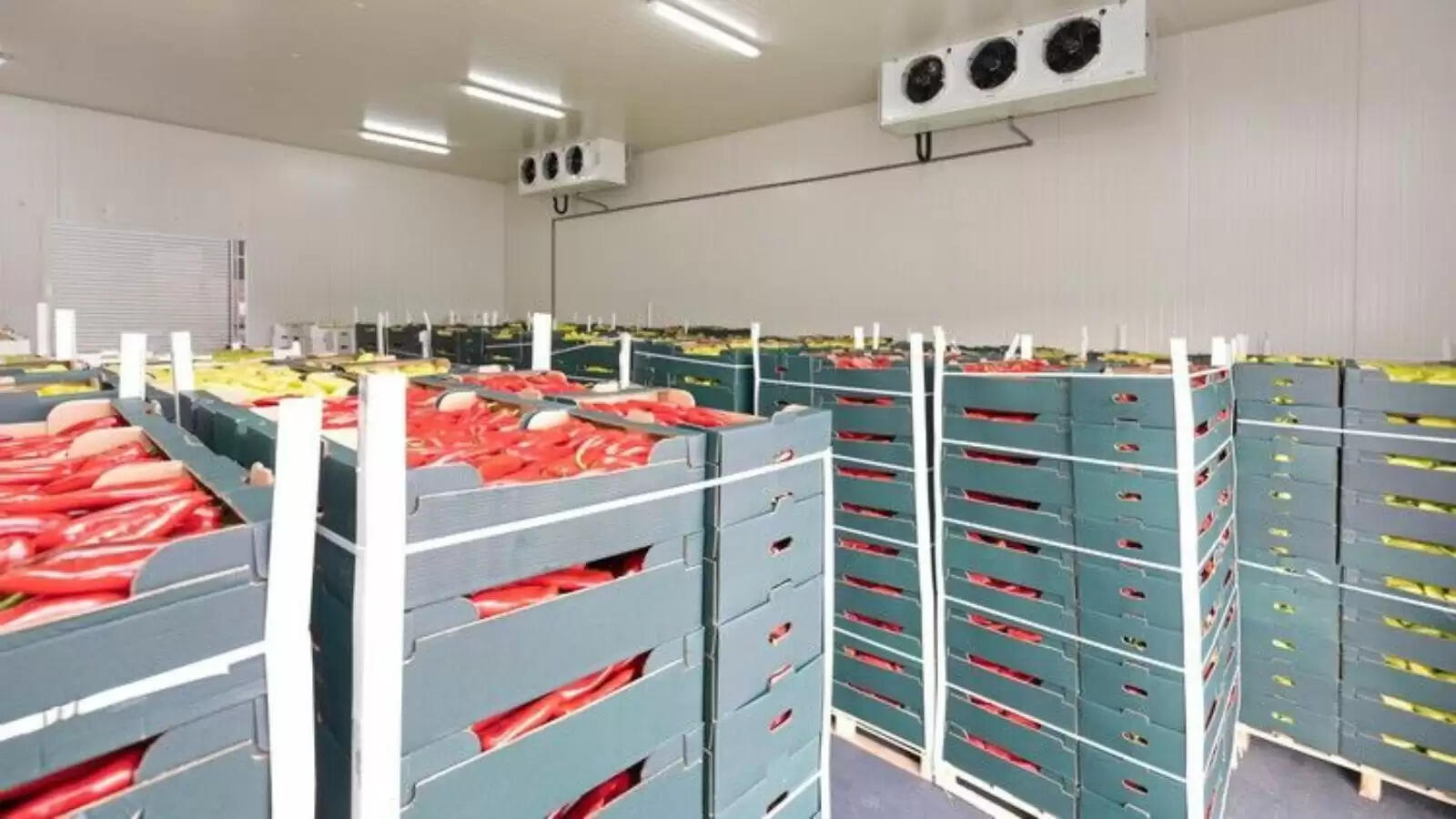Standards that must be met in your warehouse for storing fruits and vegetables.
Storing fruits and vegetables in a warehouse, there are several standards that should be met to ensure the quality, freshness, and safety of the produce.
| Sep 2, 2023, 19:31 IST

Here are some important standards to consider:-
1. Temperature control:-
Fruits and vegetables have specific temperature requirements for optimal storage. Maintaining the correct temperature helps to slow down the ripening process and prevent spoilage. Each type of produce may have different temperature requirements, but in general, the temperature should be maintained between 32°F (0°C) and 55°F (13°C).
2. Humidity control:-
Proper humidity levels are necessary to prevent dehydration or excess moisture that can lead to spoilage. Most fruits require higher humidity levels (80-90%) to maintain their freshness, while vegetables generally need lower humidity levels (60-70%).
3. Ventilation:-
Good airflow is essential to prevent the buildup of ethylene gas, which is produced naturally by fruits and can accelerate the ripening process. Adequate ventilation also helps to maintain consistent temperature and humidity levels throughout the warehouse.
4. Separation:-
Fruits and vegetables should be stored separately to avoid cross-contamination. Some fruits release ethylene gas, which can negatively affect the quality of nearby vegetables. Additionally, certain fruits and vegetables, when stored together, may cause accelerated decay or unwanted chemical reactions.
5. Packaging:-
Proper packaging can help protect fruits and vegetables during storage. It should be designed to allow for airflow while preventing physical damage. Different types of produce may require specific packaging materials, such as breathable mesh bags or crates, to maintain quality.
6. Pest control:-
Effective pest control measures should be in place to prevent infestations that can damage the stored produce. Regular inspections, proper sanitation, and the use of pest control methods approved for food storage areas are crucial.
7. FIFO (First In, First Out):-
Adhering to the FIFO principle ensures that older produce is used or sold first, reducing the risk of spoilage and waste. Proper labeling and organization of stock are necessary to facilitate this practice.
8. Food safety regulations:-
Ensure compliance with local, national, and international food safety regulations, including proper sanitation, hygiene practices, and regular inspections. This includes following guidelines for handling, storage, and transportation of fruits and vegetables.
It's important to note that specific requirements may vary depending on the type of fruit or vegetable being stored. Consulting industry standards, best practices, and local regulations is essential to ensure compliance and maintain the quality of stored produce.
1. Temperature control:-
Fruits and vegetables have specific temperature requirements for optimal storage. Maintaining the correct temperature helps to slow down the ripening process and prevent spoilage. Each type of produce may have different temperature requirements, but in general, the temperature should be maintained between 32°F (0°C) and 55°F (13°C).
2. Humidity control:-
Proper humidity levels are necessary to prevent dehydration or excess moisture that can lead to spoilage. Most fruits require higher humidity levels (80-90%) to maintain their freshness, while vegetables generally need lower humidity levels (60-70%).
3. Ventilation:-
Good airflow is essential to prevent the buildup of ethylene gas, which is produced naturally by fruits and can accelerate the ripening process. Adequate ventilation also helps to maintain consistent temperature and humidity levels throughout the warehouse.
4. Separation:-
Fruits and vegetables should be stored separately to avoid cross-contamination. Some fruits release ethylene gas, which can negatively affect the quality of nearby vegetables. Additionally, certain fruits and vegetables, when stored together, may cause accelerated decay or unwanted chemical reactions.
5. Packaging:-
Proper packaging can help protect fruits and vegetables during storage. It should be designed to allow for airflow while preventing physical damage. Different types of produce may require specific packaging materials, such as breathable mesh bags or crates, to maintain quality.
6. Pest control:-
Effective pest control measures should be in place to prevent infestations that can damage the stored produce. Regular inspections, proper sanitation, and the use of pest control methods approved for food storage areas are crucial.
7. FIFO (First In, First Out):-
Adhering to the FIFO principle ensures that older produce is used or sold first, reducing the risk of spoilage and waste. Proper labeling and organization of stock are necessary to facilitate this practice.
8. Food safety regulations:-
Ensure compliance with local, national, and international food safety regulations, including proper sanitation, hygiene practices, and regular inspections. This includes following guidelines for handling, storage, and transportation of fruits and vegetables.
It's important to note that specific requirements may vary depending on the type of fruit or vegetable being stored. Consulting industry standards, best practices, and local regulations is essential to ensure compliance and maintain the quality of stored produce.
